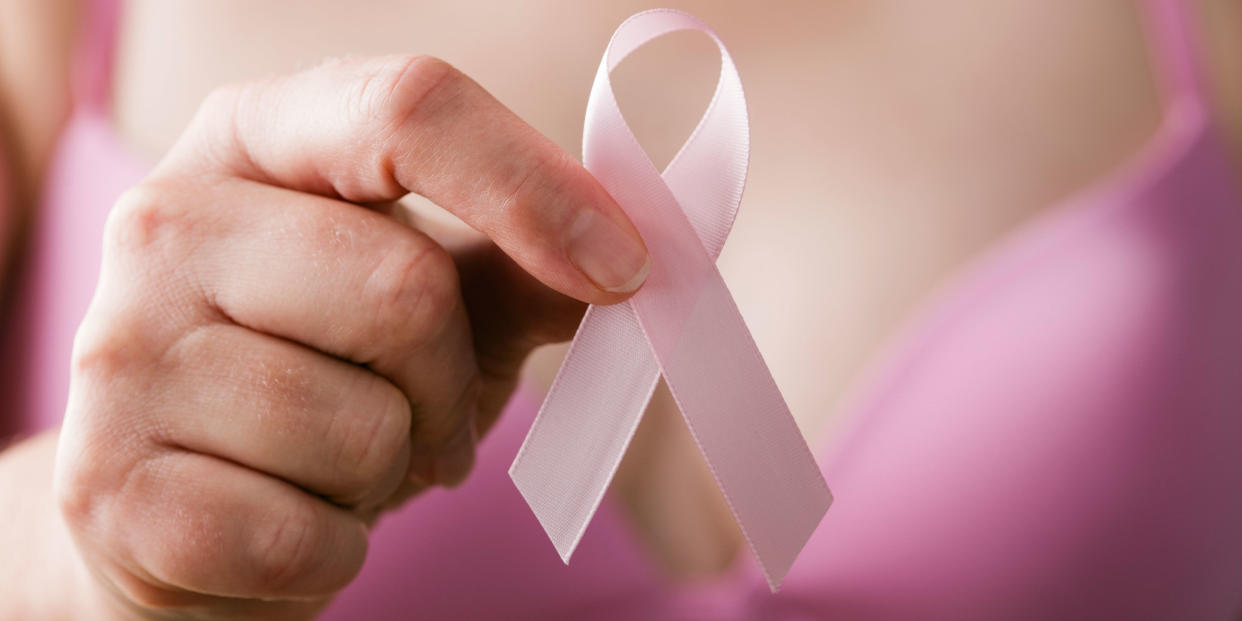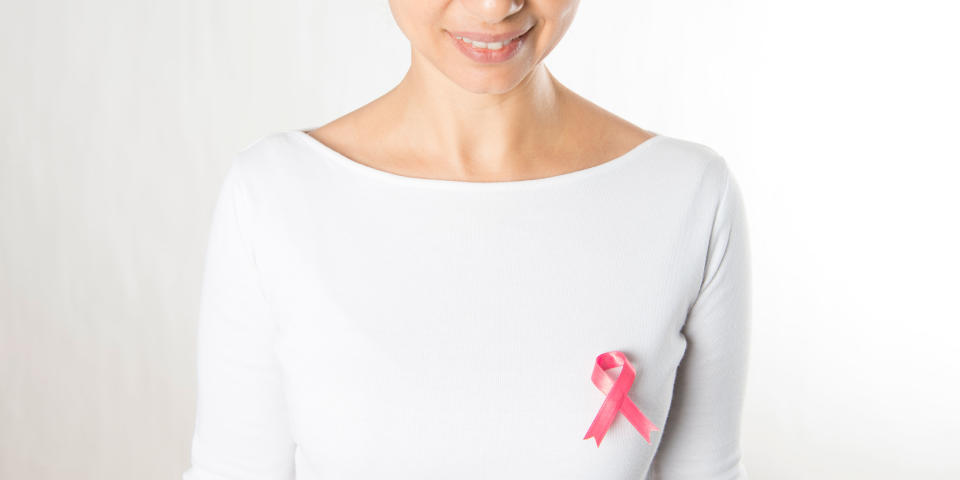13 myths about breast cancer debunked

Breast cancer is the most common cancer in the UK and it's estimated that 5,000 people will be diagnosed this Breast Cancer Awareness Month (October).
There are so many myths floating around it's sometimes hard to tell fact from fiction. As with any cancer, the earlier the diagnosis the better chance of beating it, so make sure you know the real signs and symptoms.
Sue Oliver, Professional Head of Mammography & Laser Safety at Nuffield Health debunks the most common breast cancer myths to make sure you know the facts…
1. Myth: Most breast lumps are cancerous
A lump is not necessarily a sign that you have breast cancer. Roughly 80% of lumps in women's breasts are caused by benign (noncancerous) changes, cysts, or other conditions. If you find a lump, don't panic - but you should have it checked just to be sure.
2. Myth: Breast cancer always comes in the form of a lump
Many women examining their breasts wrongly believe they should be looking exclusively for lumps. There are other changes in the breast to look out for such as changes to breast skin (swelling, skin irritation or dimpling), changes to the shape and size of the breasts, breast or nipple pain, nipple inversion, redness, scaliness, thickening of the nipple or breast skin, or a discharge other than breast milk. Like lumps, these signs could indicate cancer but are more likely to benign conditions.
3. Myth: If you're at risk for breast cancer, there's little you can do but watch for the signs
There's a lot that women can do to lower their risk. According to Cancer Research UK, 27% of breast cancers are linked to lifestyle factors. Being obese increases your chance of having breast cancer by 9%. Lowering alcohol consumption can reduce the risk by as much as 6%, and being active can reduce the risk by another 3%.
4. Myth: Only women with a family history of breast cancer are at risk
Roughly 70% of women diagnosed with breast cancer have no identifiable risk factors for the disease such as a first or second degree relative with the illness.
5. Myth: Wearing an underwire bra increases your risk of getting breast cancer
Claims that underwire bras compress the lymphatic system of the breast, causing toxins to accumulate and cause breast cancer, are not backed up by science. The consensus is that neither the type of bra you wear nor the tightness of your underwear or other clothing has any connection to breast cancer risk.

6. Myth: Wearing antiperspirant increases your risk of getting breast cancer
There are claims that parabens and aluminium, used in some antiperspirants, may contribute to breast cancer development. But no cause-and-effect connection between toxin build up or aluminium exposure and breast cancer has been established.
7. Myth: Small-breasted women have less chance of getting breast cancer
Very small breasts and very large breast can be difficult to examine using mammography and MRI but there is no evidence to show that women with small breasts are less likely to develop breast cancer. Mammographers are specially trained to ensure women of all sizes can be screened. More important than size is the type of tissue the breast is made of. Very dense tissue, which shows up white on a mammogram, can make it difficult to detect small cancers.
8. Myth: Caffeine causes breast cancer
No causal connection has been found between drinking caffeine and getting breast cancer. In fact, some research suggests that caffeine may actually lower your risk. So far, it's inconclusive whether breast soreness may be linked to caffeine.
9. Myth: Stress causes breast cancer
There is no evidence for this, but beware of over eating and drinking excess alcohol in times of stress, as this does increase the risk.
10. Myth: An injury to the breast can result in cancer
There is no evidence for this although an injury to the breast may cause tenderness and a bruise may feel like a lump
11. Myth: Women with lumpy breasts (fibrocystic breast changes) have a higher risk of developing breast cancer
In the past, women with lumpy, dense, or fibrocystic breasts were believed to be at higher risk of getting breast cancer, but there doesn't appear to be a connection after all. However, when you have lumpy breasts, it can be trickier to differentiate normal tissue from cancerous tissue, so you should report any changes to your GP.
12. Myth: Mammograms expose you to so much radiation that they increase your risk of cancer
While it's true that radiation is used in mammography, the amount is so small that any associated risks are tiny when compared to the huge preventive benefits gained from the test. Mammograms can detect lumps well before they can be felt or otherwise noticed, and the earlier that lumps are caught, the better one's chances of a positive outcome.
13. Myth: Men can't get breast cancer
Men have small amounts of breast tissue too. Around 400 men are diagnosed every year. Any changes or lumps should always be investigated.
If you are concerned about changes to your breasts, always see your GP or call Breast Cancer Care on its free helpline 0808 800 6000.
You Might Also Like


